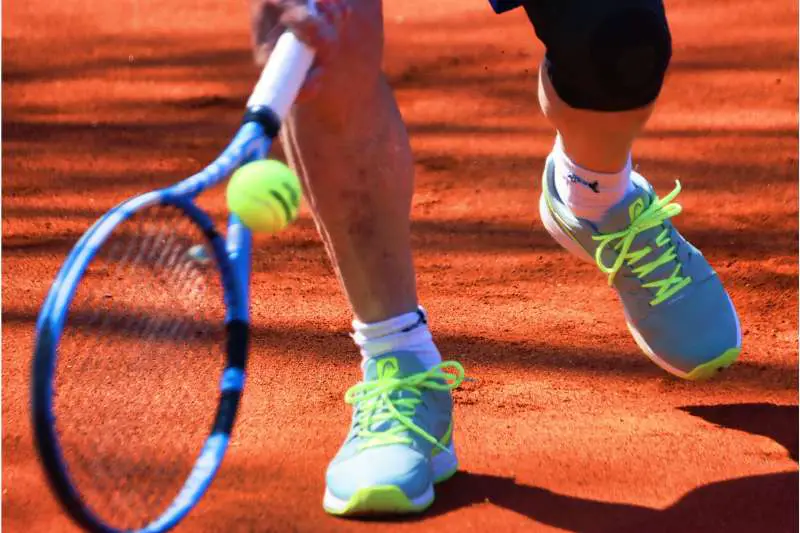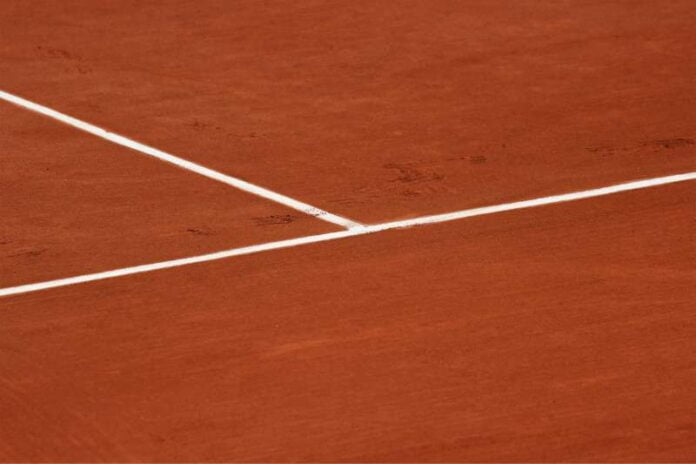You may be thinking for how to build a clay tennis court in your backyard? first level up the site, then install drainage and a stone base. Next, add multiple layers of crushed stone before topping with clay.
One crucial part is that you need a proper plan and attention to detail to start building the clay court in your backyard. A properly planned clay surface can offer special benefits to the players, such as slowing the game and reducing the impact on their joints.
This project will transform your backyard into a personal sporting space. It will enhance your property value and offer endless hours of entertainment. A proper plan, tools, and materials can make building a clay tennis court a massive undertaking that promises an authentic tennis match-playing experience.
It is essential to consider factors like space availability, budget limitations, maintenance costs, and actual weather conditions before starting this exciting initiative.
The Allure Of A Backyard Clay Tennis Court
The greed of a backyard clay tennis court is unmatchable for tennis lovers. Imagine you’re stepping out into your garden, and you find a soft surface for practicing your backhand, and then your imagination suddenly ends.
And you’re thinking, ahh! If it was in real life, which is a dream to the many tennis legends. Below, we dive into the charm and considerations of constructing a personalized clay court.
The Charm Of Clay Surfaces
Clay courts boast a rich tennis heritage, synonymous with the prestigious French Open. They provide a unique playing experience that can enhance your game. Balls bounce higher and slower, allowing more time to reach shots.
This can lead to longer, more tactical rallies. Clay surfaces also mean less stress on your joints, making your game as comfortable as it is competitive.
Pros And Cons For Residential Courts
Before considering a clay court for your backyard, weigh the benefits and drawbacks.
Pro: Enhanced Playability and Comfort. Clay’s cushioned feel reduces injury risk.
Pro: Aesthetic Appeal. A beautiful clay court can turn your backyard into a stately oasis.
However, there are cons.
Con: Maintenance can be a daily duty. Clay courts require regular watering, brushing, and rolling.
Con: Weather Dependent. They are more susceptible to damage from rain and need time to dry. Finally, Con: Initial Investment. The cost to install a clay court is typically higher than other surfaces.

Preparation Essentials:
Before dreaming about your first match, focus on the groundwork. Preparation essentials transform your backyard into a tennis paradise. Let’s dig into specifics.
Choosing The Right Location
Site selection is crucial. Look for a flat, open area with minimal slope. Watch for overhanging trees. They might drop leaves, disrupting play. Ensure enough space for baseline and side run-offs. Safety first!
Understanding Soil And Land Requirements
Clay courts demand particular soil types. Check two main factors: drainage and firmness. Use a table to evaluate soil:
| Soil Type | Drainage Quality | Firmness |
| Clay | Poor | Excellent |
| Sand | Excellent | Poor |
| Loam | Average | Average |
Opt for soil with balanced properties or consider professional ground modification. Test soil layers to confirm suitability. Perform this task to prevent future headaches.
Laying The Foundation
Success in building a clay tennis court lies in its foundation. The process might seem daunting, but proper planning and execution will lead to many years of enjoyable game play. Let’s prepare to lay a durable, even, and sustainable foundation.
Materials And Tools Needed
Gathering the right tools and materials is key for a solid start.
- Gravel – forms a stable drainage layer.
- Crushed stone – ensures a flat, compact base.
- Laser level, measuring tape, and stakes – for accuracy.
- Plate compactor – compacts the base layers.
- Landscape fabric – separates the layers and prevents weed growth.
- Concrete or curbing – borders the court to hold clay in place.
Step-by-step Construction Process
The process is detailed but manageable with these steps.
- Measure and mark the court area using stakes and string.
- Dig the marked area to the desired depth, usually 18 to 24 inches.
- Install drainage using a layer of gravel at the base.
- Compact the gravel with a plate compactor.
- Add a layer of crushed stone over the gravel layer.
- Compact again to create a solid, flat base.
- Lay landscape fabric to separate the stone layers and prevent weeds.
- Construct concrete curbing around the court area.
- Ensure the base is level with a laser level.
The foundation sets the stage for the clay, nets, and play. Make sure to compact each layer thoroughly to avoid any shifting or uneven surfaces.
Maintenance For Court Longevity
Remember that your backyard clay tennis court is not just a fun addition to your home; it’s an investment.
You know maintenance is the key to years of enjoyment and top-notch play. To ensure the longevity of your tennis court, you need to provide routine care and protection of components.
Regular Upkeep Practices
Follow regular maintenance routines to keep your clay court in prime condition.
- Brush the surface after each use to distribute clay evenly.
- Level playing lines to maintain proper boundaries.
- Check and remove debris such as leaves or twigs regularly.
- Monitor the moisture level to make sure the clay is not too wet or too dry.
- Apply soil conditioner as needed to maintain court consistency and bounce.
Weatherproofing Your Clay Court
Protect your court from weather damage to extend its lifetime.
- Drainage Systems: Ensure proper drainage around the court to prevent water accumulation.
- Covering: Cover the court to protect the surface from rain and maintain moisture levels.
- Wind Protection: Install windbreaks to shield the surface from strong winds and erosion.
- Seasonal Preparation: Properly winterize your court to avoid cracks and other cold weather damage.
Frequently Asked Questions On How To Build A Clay Tennis Court In Your Backyard
What Is The Cheapest Surface For A Tennis Court?
The cheapest surface for a tennis court is generally asphalt. It offers a cost-effective and durable option for players.
How To Build An Outdoor Tennis Court?
Choose a flat, wide area. Prepare the soil by leveling and compacting. Install a drainage system to prevent water accumulation. Place a suitable surface, such as grass, clay, or concrete, and mark the boundaries. Build a fence around it for safety and wind protection.
How Many Tons Of Clay Do I Need For A Tennis Court?
Generally, about 34 tons of soil is required to build a tennis court. This amount ensures proper coverage and maintenance of the playing surface.
How Do You Build A Tennis Court On Grass?
To build a tennis court on grass, choose a level area and remove debris. Lay turf suitable for sport, ensure proper drainage, and mark the court dimensions accurately. Regular maintenance is essential to keep the surface playable.
Conclusion
Crafting your clay tennis court is an achievable dream with the right resources and dedication. By following the steps outlined, you’ll create a personal sports haven that brings endless enjoyment and a touch of class. So grab your tools and start building; an elegant, tailor-made clay court awaits in your backyard.
All the best!


